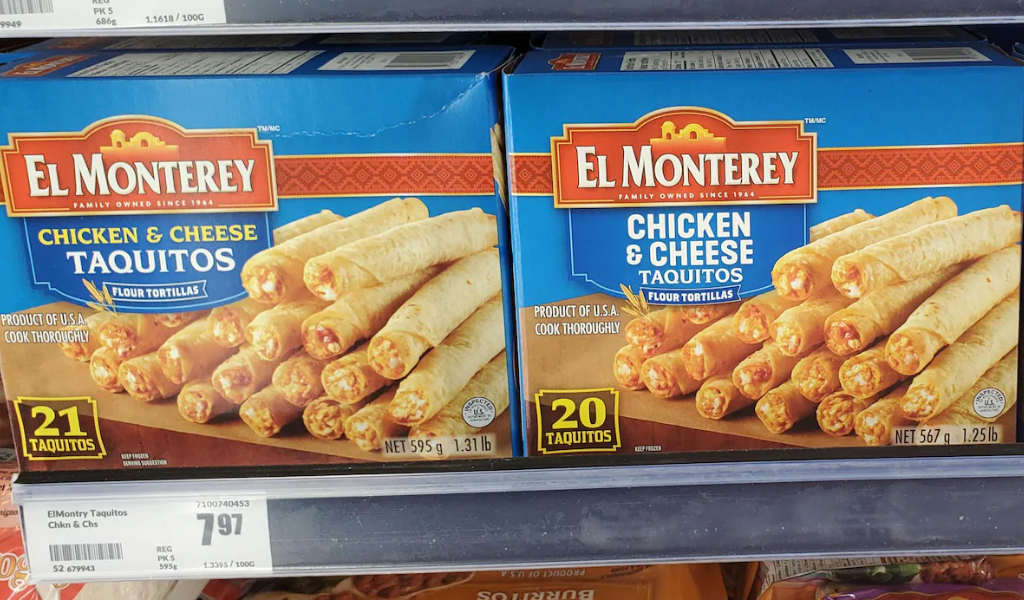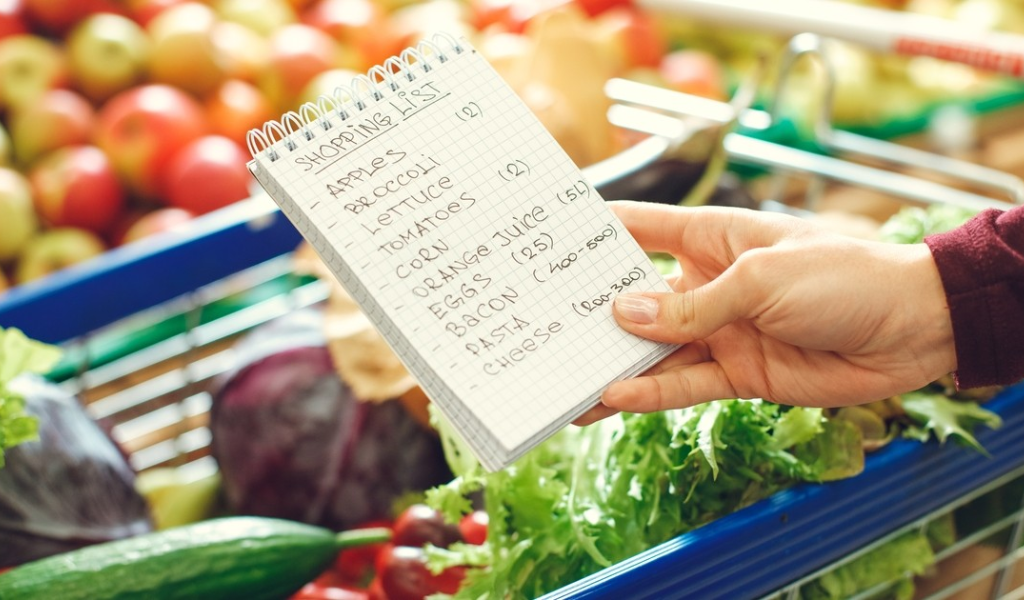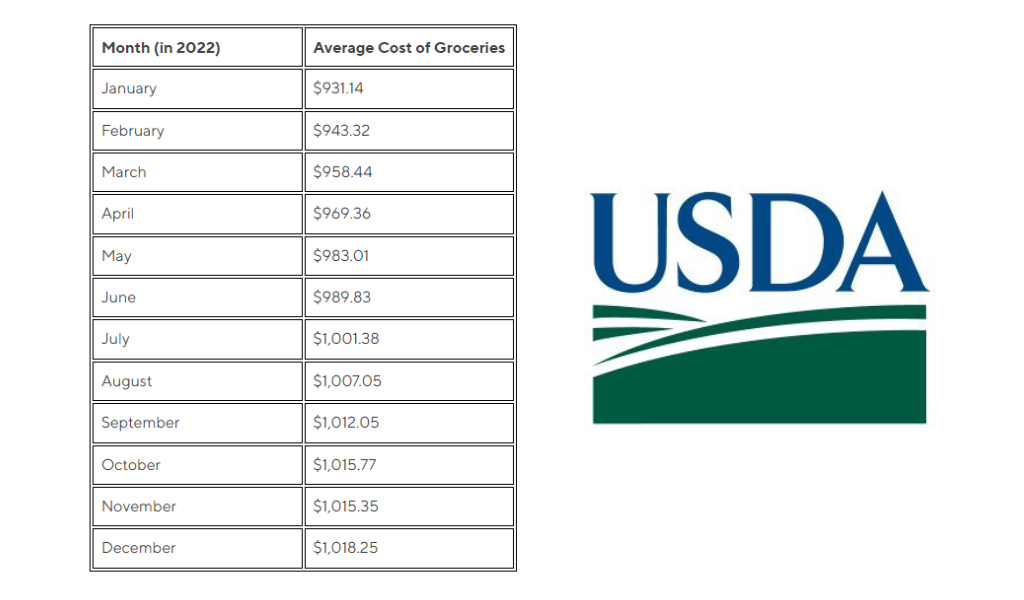Grocery shopping is one of the most essential and frequent costs for most households. However, it can become challenging and stressful if you are on a tight budget. Therefore, we are here to share 7 saving tips for grocery shopping on a budget. These tips will help you save money on groceries without compromising quality and nutrition.
1. Be Aware Of Shrinkflation
Shrinkflation happens when products you buy get smaller, but their prices stay the same or even increase. It’s a trick many companies use to hide inflation and make more money. This phenomenon can happen with any product: candy bars, cereal, chips, toilet paper, and more.

To avoid being tricked by shrinkflation, you must be a savvy shopper. Always check how much you’re getting for the price and compare it to what you used to get. There are several signs of shrinkflation: bigger gaps in your snacks, thinner slices, or smaller packages.
If you spot it happening, choose a different brand or product that gives you more for your money, or wait for a sale and buy in bigger packs. Smart shopping is the key!
2. Plan Your Meals And Shopping List
Learning how to buy groceries on a budget is crucial for anyone who wants to handle their expenses effectively. First, make a shopping list and meal plan – a simple way to control your spending.
When you make impromptu trips to buy food, you might decide what to buy on the spot, often resulting in unnecessary grocery purchases.

It’s wise to create a grocery list beforehand and stick to it during your shopping trip to monitor your spending better. This approach helps you budget for each visit and saves time at the store.
Preparing your meals for the upcoming week is an excellent method to manage your shopping list. Once you’ve determined each meal, check your pantry for the ingredients you already have and add any missing ones to your list.
3. Buy Fresh Fruits And Vegetables In Season
Fruits and vegetables are vital to a healthy diet but are also pricey if you buy them out of season or imported from far away. To solve this issue, purchasing fresh fruits and vegetables in season is a great option. It helps you save money and enjoy better quality and taste.
Seasonal produce is usually cheaper, fresher, more nutritious, and more flavorful than produce grown in greenhouses or shipped from other countries. It is also a way to support local farmers and reduce your environmental impact by buying seasonal produce.
To get fresh fruits and vegetables in season, visit local zero-waste grocery stores and enjoy nutritious food at a reasonable price.
4. Learn the Clean Fifteen and Dirty Dozen
Another way to grocery shopping on a tight budget is to learn the Clean Fifteen and Dirty Dozen lists published by the Environmental Working Group (EWG).
The Clean Fifteen lists fruits and vegetables with the lowest pesticide residues when grown conventionally. Meanwhile, the Dirty Dozen list includes ones that have the highest amount of pesticide residues when grown conventionally.

By following these lists, you can decide which vegetables and fruits to buy organic and which to buy conventional. Organic produce might be more expensive than conventional produce, but it is also better for your health and the environment.
However, if you cannot afford organic produce or it is unavailable in your area, you can still reduce your exposure to pesticides by washing and peeling your fruits and vegetables before eating them.
5. Buy In Bulk
Many might not know, but buying in bulk is also a tip to grocery shop sustainably while saving money. It not only takes advantage of lower prices per unit, discounts, or sales but also reduces packaging waste and trips to the store.
However, buying in bulk also has some drawbacks, such as taking up more space in your pantry or freezer, increasing the risk of food spoilage or waste, or tempting you to overeat or overspend.
Therefore, you should only buy bulk items you use frequently, have a long shelf life, are non-perishable or freezable, and offer significant savings.
6. Use Coupons
Using coupons is one of the most common tips for grocery shopping on a budget. That’s how you significantly reduce your purchases’ overall cost and stay within budget.
And guess what? You can get the best deals and exclusive coupons from Tenere.

We exclusively made a user-friendly ChatGPT plugin and extension to help you find coupons more easily. It’s a fantastic way to streamline your coupon-searching process, allowing you to shop on a budget easily.
Let’s say you’re planning to shop for groceries at Walmart. Don’t be afraid if you are over your budget, as we have some of the best Walmart coupons available online: a $10 off coupon for $50+ grocery orders, a 10% discount on all purchases, and more.
So, with our website and the handy ChatGPT tool, you’ll be a budget-savvy shopper in no time. Food shopping on a budget has never been so simple and fun!
7. Utilize Leftovers
Utilizing leftovers on your grocery shopping on a budget list is another savvy way to save money. When you use your creativity with leftovers, there are dozens of exciting possibilities. For example, you can turn them into delicious soups and casseroles or even create entirely new dishes.
This way, you won’t have to throw away any uneaten food. If you are stuck and unsure what to make, visit recipe websites. Just enter your ingredients as leftovers, and you’ll discover plenty of new and tasty ideas.
The Bottom Line
By following 7 saving tips for grocery shopping on a budget we shared above, you can save money on groceries without sacrificing quality, nutrition, or taste. That’s how you enjoy a more satisfying and rewarding shopping experience.
Remember that saving money on groceries is not only good for your wallet but also for your health and the environment. Happy shopping!
Bonus: What Is A Good Grocery Budget For 3?
Based on the USDA’s monthly food plan, the typical grocery expenses for a family of three in 2022 varied between $722 and $1,230. This range depended on various factors, including the family members’ ages, genders, and the food plan they adhered to.

The USDA has different plans for how much money a family should spend on food: thrifty, low-cost, moderate-cost, and liberal. Thrifty is the cheapest, while liberal is the most expensive. The moderate-cost plan is in the middle, ensuring your family eats well but doesn’t spend too much. On this plan, a family of three spends around $892 monthly, which is about $206 every week.
Remember, this number is an average for the whole country. Your situation might be different, so consider carefully. For those who live in a pricey place like New York City, you might need a more generous food budget than someone in Texas.
To know the right amount to spend on groceries for your family of three, use a grocery calculator or a budgeting app. These tools help you decide how much money you should set aside for food each month based on what you earn and how you usually spend your money.









